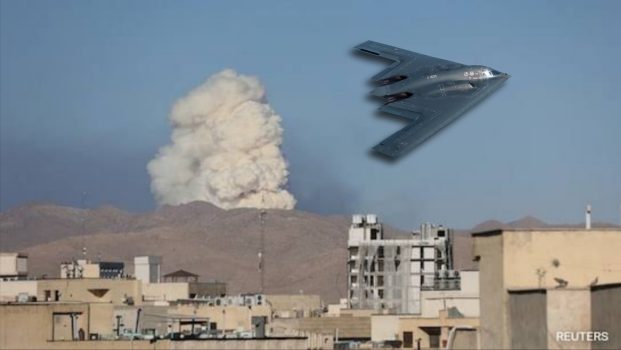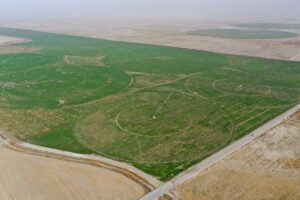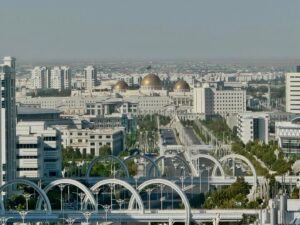 Pin
Pin Midnight Strikes: The Blast That Shook the Middle East. Image: Reuters
In the deep of night on June 21, the United States launched a sweeping assault, targeting three of Iran’s most critical nuclear facilities—Fordow, Natanz, and Isfahan—with bunker‑busting bombs and cruise missiles. According to President Trump, the strikes were a “very successful attack,” employing B‑2 stealth bombers and submarine-launched Tomahawks. The message was clear: the U.S. seized a historic opportunity to cripple Iran’s nuclear enrichment capabilities.
Strategic coordination played a major role. Israel was reportedly notified ahead of time, along with select U.S. lawmakers, yet the operation bypassed full congressional approval. The timing indicated a decisive shift in U.S. policy, expanding the conflict beyond Israel’s initial campaign. Trump framed this not as conquest, but as a turning point—one that could lead the world toward peace or tip the region into chaos.
Global reaction came swiftly. Allies praised America’s display of resolve, while critics immediately condemned it. Concerns over legality, potential civilian harm, and the risk of responding tit‑for‑tat escalations in places like Iraq and Syria began to surface. Still, the administration asserted the attack removed a major nuclear threat, asserting that all U.S. aircraft returned safely and without incident.
Table of Contents
Decisive Action, Delicate Balance
In a bold operation executed on the night of June 21, the U.S. joined Israel in striking three critical nuclear sites in Iran—Fordow, Natanz, and Isfahan. B‑2 stealth bombers dropped multiple Massive Ordnance Penetrators on deeply buried facilities, while submarines unleashed Tomahawk missiles to support the strikes. President Trump lauded it as a “very successful attack,” stating that all U.S. aircraft returned safely. The operation marked a first-of-its-kind direct U.S. military action on Iranian territory, raising the stakes in an already volatile region.
Despite the sheer force and coordination behind the mission, Trump repeatedly stressed that the objective wasn’t to ignite a new war—but to force Iran into surrendering its nuclear ambitions. His declaration “Now Is Time For Peace” underlined the thrust of his message: the U.S. sought not perpetual conflict, but a reset. The administration insisted this strike didn’t signify a plan for ground invasion, focusing instead on swiftly disabling Iran’s nuclear infrastructure and deterring future proliferation.
International reactions were swift and polarized. Israeli Prime Minister Netanyahu applauded Trump’s “strength before peace” stance, while global leaders and legal experts questioned the legality and risk of escalation. In Congress, Republicans largely backed Trump’s decisive action, while Democrats, including Sen. Sanders and Rep. Tlaib, raised constitutional and moral concerns. Diplomatic efforts by the UN and Europe were urged to regain momentum and prevent full-blown war.
Law, Politics, and a Precarious Peace
The unilateral decision by the President to strike Iran’s nuclear facilities sparked fierce debate over constitutional powers. Critics argue that launching such a significant military operation without Congressional approval breaches the War Powers Resolution. Representative Alexandria Ocasio‑Cortez, among others, publicly urged impeachment proceedings, emphasizing “it violated the Constitution”. Legal scholars acknowledge previous precedents—Clinton and Obama ordered similar limited strikes—but warn this large-scale incident escalates the risks of unchecked presidential authority.
Amid partisan chasms, Republicans largely rallied behind the strikes. Senator Lindsey Graham called it “the right call,” while Speaker Mike Johnson praised the decisive stance. Conversely, several Democrats and libertarians raised concerns, with Rep. Sean Casten labeling it “an impeachable offense,” and Sen. Bernie Sanders insisting, “only Congress can authorize war”. This split reflects broader friction between America’s national security priorities and its democratic checks and balances.
Internationally, the strikes inflamed global anxiety. UN Secretary‑General António Guterres condemned the action, deeming it a “dangerous escalation” and urging a return to diplomacy. Meanwhile, Europe, Egypt, and Saudi Arabia called for de‑escalation, fearing regional spillover and a potential collapse of ongoing nuclear talks that were already strained. As Iran vows retaliation and regional tensions spike, the world watches closely—hoping diplomacy can still prevail.
Regional Fallout and the Road Ahead
The unprecedented U.S. strikes on Iran’s nuclear sites delivered a clear signal: Washington and Israel united to neutralize critical threats at Fordow, Natanz, and Isfahan. According to Biden-era intelligence and military analysis, these deeply buried facilities once capable of enriching uranium close to weapons-grade were the heart of Tehran’s nuclear ambitions. Employing B‑2 stealth bombers with Massive Ordnance Penetrators and a barrage of Tomahawk missiles, the U.S. reportedly eliminated the ability for future nuclear enrichment—while President Trump emphasized all aircraft returned safely.
Iran’s response remains cautious but defiant. Supreme Leader Ali Khamenei has reiterated his longstanding fatwa against nuclear weapons, yet fierce opposition within the regime grows louder as Ayatollahs argue that an attacked nation may no longer be bound by that ruling. In Tehran, state media confirms the strikes hit their intended targets, yet downplays radiation risk. Still, regional militia groups like Hezbollah and pro-Iranian factions in Iraq have warned of “direct retaliation” if Iran’s leaders decide the time is right.
Meanwhile, diplomatic channels scramble. European and U.N. officials fear that this escalation could derail the last threads of nuclear diplomacy. Voices in the Middle East urge calm: Saudi Arabia, Egypt, and others call for immediate de-escalation, while U.N. Secretary-General António Guterres described the operation as a “dangerous escalation.” The message from Washington insists there are no further planned strikes—“Now Is Time For Peace”—but as tensions simmer, the coming weeks may determine whether this becomes an historic pivot toward disarmament or the ignition of a broader conflagration.
Diplomacy on Edge—Can Peace Withstand the Fallout?
The U.S. strikes hit during a fragile moment in talks. Only two days earlier, on June 20, Iran had resumed nuclear negotiations with European powers in Geneva—led by France, Germany, and the U.K.—aiming to de-escalate and curb uranium enrichment. The airstrikes on Fordow, Natanz, and Isfahan arrived just as diplomats had re-entered talks, threatening to unravel any confidence in the diplomatic process. The timing suggests Trump was willing to use force to redefine negotiation terms, but the blow may intensify mistrust months after indirect U.S.–Iran communication via Oman and Italy had already collapsed.
European officials immediately sounded the alarm, warning that the strikes could collapse the nuclear talks entirely. U.N. Secretary-General António Guterres called it a “dangerous escalation” and urged all sides to return to the table. Geneva diplomats suspended negotiations indefinitely, worried about the optics and feasibility of future deals under direct military threat. For Tehran, the message was clear: diplomacy hinges not on good faith but on vulnerability to strikes. Without swift rebuilding of trust—perhaps via confidence-building steps or new verification mechanisms—the path to peace may be permanently compromised.
Yet, amidst the tension, a narrow opportunity remains. Trump’s insistence that “Now Is Time For Peace” appears intended as both a deterrent and an invitation. Should the U.S. signal readiness to back its words with treaty-level commitments—like sanction relief tied to verifiable steps by Iran—it could present a diplomatic lifeline. Still, that requires quick follow-through, meaningful talks, and restraint on all sides. Otherwise, the operation may be remembered not as the spark of peace but the moment diplomacy shattered.
Economic Ripples & Global Security Risks
The dramatic strikes on Iran’s nuclear facilities set off immediate shockwaves across global markets. Oil prices surged over 5%, nearing levels last seen in early 2025, as uncertainty gripped energy traders uncertain about supply stability through the Strait of Hormuz . Analysts warned that while the strikes may have temporarily slowed Iran’s nuclear progress, they also heightened the risk of a prolonged conflict—threatening Gulf oil exports and inviting retaliatory sabotage on shipping lanes or infrastructure.
Stock markets reacted negatively, with the S&P 500 dipping by nearly 1%, and investors flocking to safe-haven assets like gold and the Swiss franc . Major commodity strategists cautioned that sustained geopolitical volatility could trigger a global economic slowdown. This economic uncertainty came at a sensitive time—the S&P had just hit record highs weeks earlier—so the sudden spikes in oil and declines in equity heights strained corporate forecasts and central banks monitoring inflation.
Beyond markets, concerns about global security near critical infrastructure intensified. Refugee flows from Iran’s border areas grew amid rising fears of an expanded war. Shipping firms began rerouting vessels away from high-risk Persian Gulf transit routes, increasing freight insurance premiums. With trade and energy supply lines threatened, governments worldwide urged immediate diplomatic de-escalation, warning that the peripheral consequences of this strike could ripple far beyond the Middle East.
Inflation, Markets & the Looming Economic Toll
The U.S. strikes targeting Iran’s nuclear facilities sparked immediate tremors across financial markets. Oil prices surged more than 5% after the announcement, reacting sharply to the threat of supply disruption near the Strait of Hormuz . Analysts warn that should Iran retaliate by threatening or closing the Hormuz route—through which nearly 20 million barrels per day pass—oil could spike toward $130 per barrel, pushing global inflation higher and jeopardizing central banks’ plans for future rate cuts .
Equity markets exhibited mixed responses. In the U.S., the S&P 500 dipped slightly, reflecting “knee‑jerk” investor caution as capital shifted toward safe-haven assets like gold, the dollar, and government bonds—common during geopolitical crises . Gulf markets, including Saudi Arabia and Dubai, also experienced mild declines, with regional stocks falling as uncertainty rattled investors . Still, history suggests such sell‑offs are often short-lived—so long as the strikes don’t ignite a broader regional war .
For consumers, the effects could be tangible. Higher oil raises gasoline and heating costs, feeding into overall inflation and reducing spending power. Central banks now face a policy dilemma: tighten rates to fight inflation, or stand down to support sputtering growth. With U.S. rate cuts already on hold and cautious signals from policymakers, this geopolitical shock could stall recovery efforts—even in robust economies—if tensions persist beyond the immediate aftermath of the strikes.
Financial Markets – Panic, Opportunity, and Strategy
The night of the airstrikes reverberated through global financial markets. Oil prices surged sharply—Brent crude shot up over 5–10% as traders feared supply disruptions through the Strait of Hormuz, based on early analysis and historical patterns . U.S. stock futures tumbled, while investors pivoted rapidly toward safe-haven assets: gold, the dollar, Swiss franc, and government bonds all saw noticeable gains . The consensus was clear: geopolitical risk reshaped portfolios overnight.
Traders and analysts shared a spectrum of views. Some, like Potomac River Capital’s Mark Spindel, predicted short-term volatility with elevated oil prices, yet believed markets would settle once the geopolitical dust cleared . Others—such as Siebert Financial’s Mark Malek—viewed the strikes as a positive pivot, decreasing uncertainty in the medium term, provided further conflict is avoided . Still, economists warned of a renewed inflationary threat; Oxford Economics modeled a worst-case spike to $130 per barrel, potentially pushing U.S. inflation toward 6% by year-end .
For policymakers, this shock introduces a dilemma. Central banks, already on edge due to tariffs and wariness about rate cuts, now face pressure: raise rates to counter inflation or support growth amid market stress and geopolitical strain. Meanwhile, emerging markets reliant on oil imports—like India—are bracing for currency depreciation and tighter bond markets . The coming weeks will test whether this financial turbulence acts as a fleeting wave or ripples into a longer economic crisis.
Market Jitters, Inflation Fears & Strategic Shifts
Global markets were rattled as news broke: the US Bombs 3 Nuclear Sites In Iran. Oil prices surged more than 5% immediately due to worries over supply through the Strait of Hormuz, while investors fled to safe-haven assets like gold, the dollar, and government bonds . Potomac River Capital’s Mark Spindel noted that markets would see “a knee-jerk” response, but real volatility depended on what came next . Jamie Cox added that this show of force might bolster a peace deal—provided Iran loses its leverage .
Analysts forecast significant ripple effects. A prolonged crisis could push oil to $120–130 per barrel, sending U.S. inflation toward 6% by year-end and complicating central banks’ plans . U.S. equity markets suffered an opening dip, especially in energy-sensitive and airline stocks, though some economists expected stabilization once panic subsided . Gulf markets also opened lower, reflecting region-wide nervousness .
This shock forces policymakers into a tight bind. Central banks must weigh whether to tighten rates further against inflation or support economic growth amid geopolitical turmoil . For emerging economies relying on oil imports—India among them—the risk includes currency weakness, rising import costs, and balance-of-payment strains . These pressures could influence global monetary strategies and indicate how long this crisis might linger in markets.
Investors Brace for Turbulence—and Tactical Opportunity
The news that US Bombs 3 Nuclear Sites In Iran jolted investors across global markets. Oil benchmarks like Brent surged more than 5%, reflecting heightened fears of supply disruption via the Strait of Hormuz . Analysts from Potomac River Capital described the reaction as a “knee‑jerk” response, while Harris Financial’s Jamie Cox noted initial volatility might settle if this serves as a deterrent rather than a prelude to war . Investor appetite shifted swiftly toward safe-haven assets—gold, the U.S. dollar, and Treasury bonds saw notable gains .
Market strategists now face a complex scenario. Siebert Financial’s Mark Malek pointed out that decisive action could reduce long-term uncertainty—if escalations are avoided . But Jack Ablin warned of a deepening inflationary threat should oil costs remain elevated—possibly leading central banks to reconsider rate plans . Oxford Economics has even cautioned that sustained disruptions could drive Brent prices toward $130/barrel, pushing U.S. inflation near 6% by year-end.
Emerging markets bear the brunt of these shifts. Countries like India must manage rising import bills and currency strain, which could lead to tighter monetary conditions . While some sectors may benefit from higher energy prices—defense stocks, oil exploration—the broader question remains: will this shock trigger a temporary adjustment or contribute to a longer-lasting economic slowdown? For now, the financial world holds its breath, watching whether this moment becomes a pivot toward peace or the start of a protracted crisis.
FAQs
On June 21–22, 2025, the U.S., working with Israel, conducted airstrikes on three Iranian nuclear sites—Fordow, Natanz, and Isfahan. The operation involved B‑2 stealth bombers dropping Massive Ordnance Penetrators (bunker‑buster bombs) and Tomahawk missiles launched from submarines. President Trump described the mission as a “very successful attack,” affirming that all U.S. forces returned safely.
These facilities were central to Iran’s uranium‐enrichment program. Fordow, located in a mountain near Qom, contained advanced centrifuges buried underground, making it a high-priority target. U.S. officials believed disabling these sites would significantly hinder Iran’s potential to develop nuclear weapons.
While the U.S. claims the strikes significantly damaged the enrichment infrastructure, Iran’s official sources minimized the impact, stating no radiation was reported and that some facilities remained intact. Overall, analysts agree the attacks set Iran’s nuclear effort back—but full disablement remains uncertain.
The strikes were launched without formal Congressional authorization, prompting criticism from lawmakers like Rep. Alexandria Ocasio‑Cortez and Rep. Jim Himes, who argue this action violated the War Powers Resolution and the U.S. Constitution. Meanwhile, global leaders and legal experts described the strike as a “dangerous escalation” under international law.
President Trump stated “Now Is Time For Peace” and warned of further action if Iran doesn’t comply. Still, Iran’s government and regional proxy groups like Hezbollah and the Houthis have vowed retaliation. Global reaction has been mixed—some countries called for de-escalation and renewed diplomacy, while others fear this may trigger a broader conflict.


































